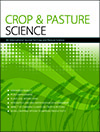Brazil is a major global producer of animal-derived food, but faces significant challenges due to unsustainable and environmentally damaging practices, such as degraded and unproductive pastures. In this study, we propose the use of silvopastoral systems with Tithonia diversifolia (a shrubby forage from tropical regions) as an alternative to overcome these challenges. Our findings show increased forage production, offering economic and environmental benefits for farmers and providing a sustainable practice for the Brazilian livestock sector.

Crop & Pasture Science
Volume 75 Number 11 2024
Increasing pasture biodiversity using forage grass species with complementary traits may be an alternative to traditional monocultures in tropical regions. This study investigated the relationship between pasture characteristics and herbage intake, indicating that combining tropical forage grass species is possible without compromising pasture dynamics and grazing animal responses. By optimizing forage diversity, we highlight the importance of species selection and seasonal complementarity for maintaining pasture structure and providing an optimal grazing environment for animals throughout the year.
There is disagreement among researchers and farmers about the best timing of Italian ryegrass desiccation before corn sowing. The influence of ryegrass desiccation times before sowing on corn grain yield and phytotoxicity bioassays suggest an important allelopathic effect. To avoid loss of grain yield, it is recommended that the planting of corn should take place at least 20 days post-desiccation of the ryegrass straw.
Long term negative balances for potassium (K) in Western Australia have led to the appearance of K deficiency in crops grown on loam-textured soils. A series of trials confirmed that K deficiency is occurring in wheat grown on these soils and that soil testing to 0–40 cm depth is required to confidently assess the adequacy of soil K supply. Monitoring of shoot K concentration at stem elongation can be used to guide in-season fertiliser K applications.
CP24195 Abstract | CP24195 Full Text | CP24195PDF (1.2 MB) | CP24195Supplementary Material (1.6 MB) Open Access Article
Red leather leaf is a common disease of oats in south-eastern Australia, with unknown impacts on hay and grain yield and quality. The oat Industry needs this information on disease management to avoid major production losses and potential loss to export markets. We show that this disease can cause significant losses, with up to 3.5 t/ha (22%) biomass loss in hay oats and 1.1 t/ha (21%) grain yield loss in milling oats. This demonstrates the need for appropriate management strategies.
CP23065 Abstract | CP23065 Full Text | CP23065PDF (342 KB) | CP23065Supplementary Material (1.2 MB) Open Access Article




